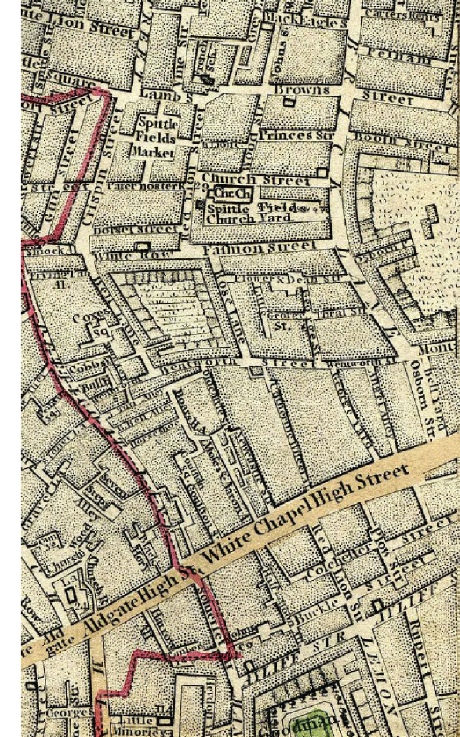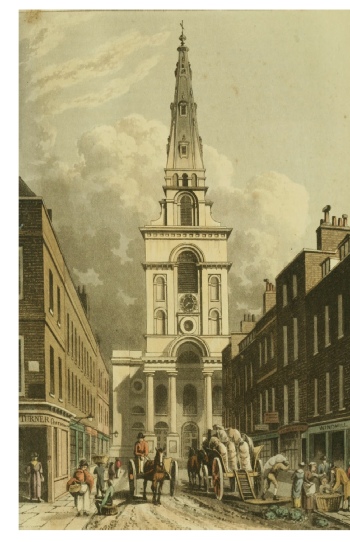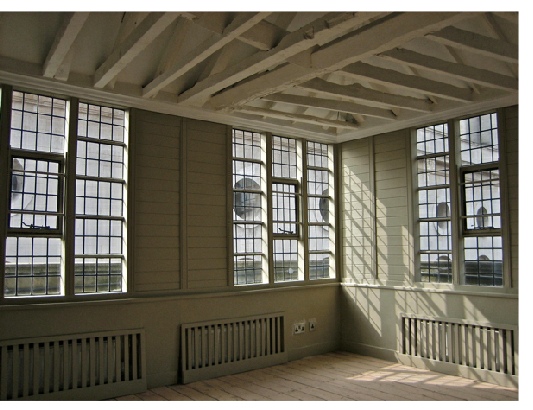Early years
 When Mary was born in about 1782 to Stephen and Ann Ducro, George III was on the
throne; Britain was at war, not with her old adversary, France, but with her most
troublesome colony, America; the Prime Minister, Lord North, had just stepped down
after a vote of no confidence; and the first convict ships would not leave Portsmouth
for Botany Bay for another five years.
When Mary was born in about 1782 to Stephen and Ann Ducro, George III was on the
throne; Britain was at war, not with her old adversary, France, but with her most
troublesome colony, America; the Prime Minister, Lord North, had just stepped down
after a vote of no confidence; and the first convict ships would not leave Portsmouth
for Botany Bay for another five years.
Mary was born in Whitechapel, just south of Spitalfields, the Whitechapel Road separating
the two parishes. Although the population of London had increased, it was still under
a million, and Spitalfields, although densely populated, marked the north eastern
limits of the City.
It is difficult to know her family’s situation, but they were certainly able to provide
Mary with a basic education. As her mother, Ann, could not write, Mary may have been
taught by another relative, or she may have attended the Charity School in Red Lion
Street: established earlier that century, a new school building was erected in 1782
and admitted all children between the ages of eight and ten whose parents resided
within half a mile of the school; no fees were charged.
As well as gaining a basic education, Mary learnt to weave from a young age. Although
her father was a bricklayer, some of her family and many of her neighbours were
weavers. It was not unusual for children to start learning to weave from as young
as six or seven. Mary first learnt to wind or quill the silk, then pick the silk
and pull the warp on the loom beam. In later life, Mary described herself as a ‘silk
warper’ - that is the person who set the up and down threads on the loom ready for
the shuttle to be passed through them and the cloth to be woven - so may not have
worked the loom itself, although no doubt she would have been able to weave a plain
piece of cloth. In the Summer of 1804, Mary and her parents were living in Phoenix
Street when her father died. Fortunately, her mother had income from an independent
source and was able to sustain the family. A few years after her father’s death,
Mary met Charles Steward, a local carpenter; perhaps he had been an acquaintance
of her father’s in the building trade. They were married on a Monday, 3 September
1810 at Christ Church. Both bride and groom signed their names. The engraving below
shows Christ Church in about 1815.
Married life
Over the next thirteen years, Mary gave birth to eight children, about one every
two years, followed by twin boys in February 1823; they died before they could be
baptised and were buried on 10 February 1823 at Christ  Church. During this time,
Mary and her family were living at Crown Court, situated in the area behind Quaker,
Wheeler and Phoenix Streets.
Church. During this time,
Mary and her family were living at Crown Court, situated in the area behind Quaker,
Wheeler and Phoenix Streets.
Until 1815, Britain had been at war with France and French imports, such as silk,
were banned. Once the war ended in the Summer of 1815, conditions declined rapidly
for the weavers of Spitalfields. Indeed, so great was their suffering that on 26
November 1816, a public meeting was held at the Mansion House for their relief. It
was stated that two-thirds of weavers were without employment and without the means
of support, that “some had deserted their houses in despair unable to endure the
sight of their starving families, and many pined under languishing diseases brought
on by the want of food and clothing”, and that the distress among the silk weavers
was so intense that “it partook of the nature of a pestilence which spreads its contagion
around and devastates an entire district.” It was during these difficult conditions,
in February 1824, that Mary’s husband, Charles died leaving her with six children.
Widowhood
Mary’s mother, Ann Ducro, who had been widowed since 1804, came to Mary’s aid and
mother, daughter, and the six children (five girls and one boy) lived together. By
the 1841 census, Mary, her mother and her two unmarried daughters, Mary Ann and Ann
Martha were living at 2 Wilkes Street (previously Wood Street) in Spitalfields (Eliza
and Esther had married in 1839, and Sarah Ann had left home to work as a cook). To
supplement Ann’s income, the three Steward ladies carried out work at home: Mary
Ann was a dress maker, and Ann a straw bonnet maker. Mary continued to work as a
silk warper, although between 1824 and 1835, the number of looms in operation fell
by two-thirds and wages dropped by a third, from about eight or nine shillings to
no more than seven shillings and six pence a week; the photograph below shows the
garret of a house in Fournier Street (formerly Church Street), the notches in the
beams indicating from where the looms would have been hung.
In 1845, Mary’s mother died and presumably her ‘independent means’ with her. In 1851,
Mary and her daughters, now 39 and 34-years old, were living on the north side of
Browns Lane (renamed Hanbury Street in 1876). The houses in Browns Lane had been
 built the previous century and were single-fronted three-storey buildings with a
roof garret, each storey consisting of two rooms. Also living at number 25 were two
dressmakers, slipper makers, shoe makers, stay makers and a baker — in all 14 people
making up six families: one family to a room — so Mary’s financial situation, like
the area, had deteriorated. Neighbouring 29 Hanbury Street became infamous 30 years
later when the mutilated body of Annie Chapman was found by the doorway of the backyard;
she was the second victim of the serial killer who became known as ‘Jack the Ripper’.
built the previous century and were single-fronted three-storey buildings with a
roof garret, each storey consisting of two rooms. Also living at number 25 were two
dressmakers, slipper makers, shoe makers, stay makers and a baker — in all 14 people
making up six families: one family to a room — so Mary’s financial situation, like
the area, had deteriorated. Neighbouring 29 Hanbury Street became infamous 30 years
later when the mutilated body of Annie Chapman was found by the doorway of the backyard;
she was the second victim of the serial killer who became known as ‘Jack the Ripper’.
A decade later in 1861, life had not altered greatly for mother and daughters, and
the three ladies were still living at Browns Lane, which was as crowded as before.
Mary and her daughters continued to support themselves, but by 1871, Mary, now in
her eighties, was unable to work and was suffering from the effects of old age to
the extent that her daughters could no longer care for her. As milliners, Mary Ann
and Ann Martha did piece work and were paid by the number of bonnets and hats they
produced or trimmings they sewed. It meant long days hunched over a needle or plating
straw. There was no alternative but for Mary to apply for admission to the workhouse.
She went to St George’s Workhouse in Princes Street, St George in the East, and was
an inmate there when the census was taken on 2 April 1871. On 17 June of that year,
Mary was admitted to the Infirmary suffering from ‘senility’. She remained in the
Workhouse for a further two years, dying on 4 July 1873 from ‘senile decay’. She
was 90 years old.


 When Mary was born in about 1782 to Stephen and Ann Ducro, George III was on the
throne; Britain was at war, not with her old adversary, France, but with her most
troublesome colony, America; the Prime Minister, Lord North, had just stepped down
after a vote of no confidence; and the first convict ships would not leave Portsmouth
for Botany Bay for another five years.
When Mary was born in about 1782 to Stephen and Ann Ducro, George III was on the
throne; Britain was at war, not with her old adversary, France, but with her most
troublesome colony, America; the Prime Minister, Lord North, had just stepped down
after a vote of no confidence; and the first convict ships would not leave Portsmouth
for Botany Bay for another five years. Church. During this time,
Mary and her family were living at Crown Court, situated in the area behind Quaker,
Wheeler and Phoenix Streets.
Church. During this time,
Mary and her family were living at Crown Court, situated in the area behind Quaker,
Wheeler and Phoenix Streets. built the previous century and were single-
built the previous century and were single-